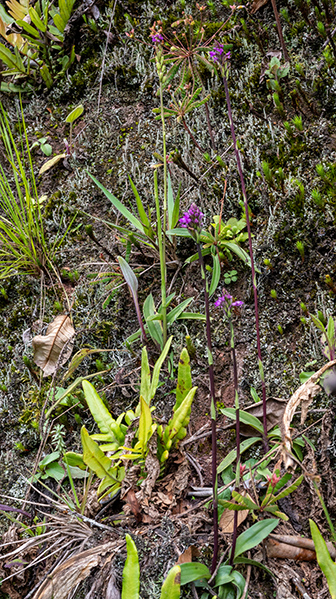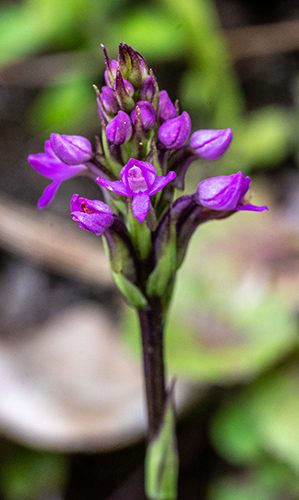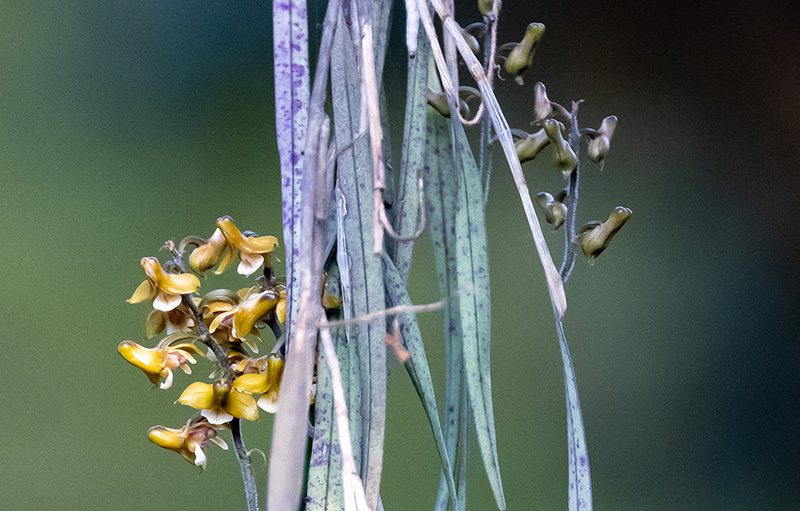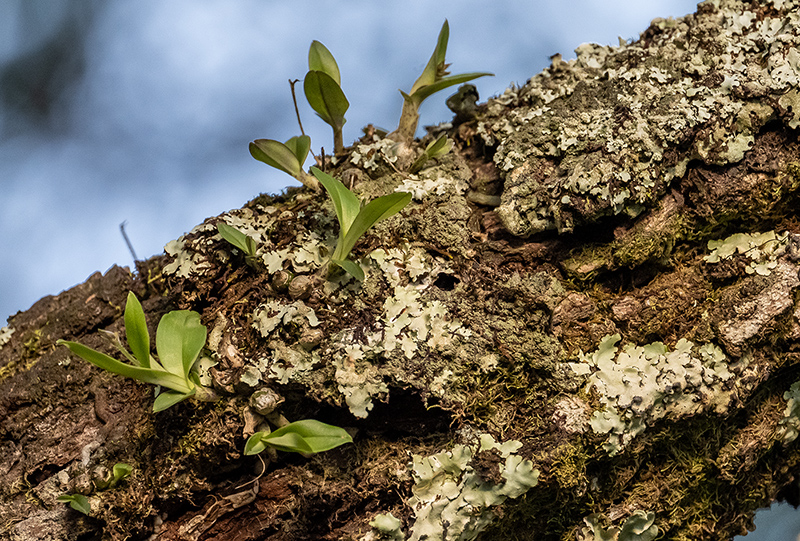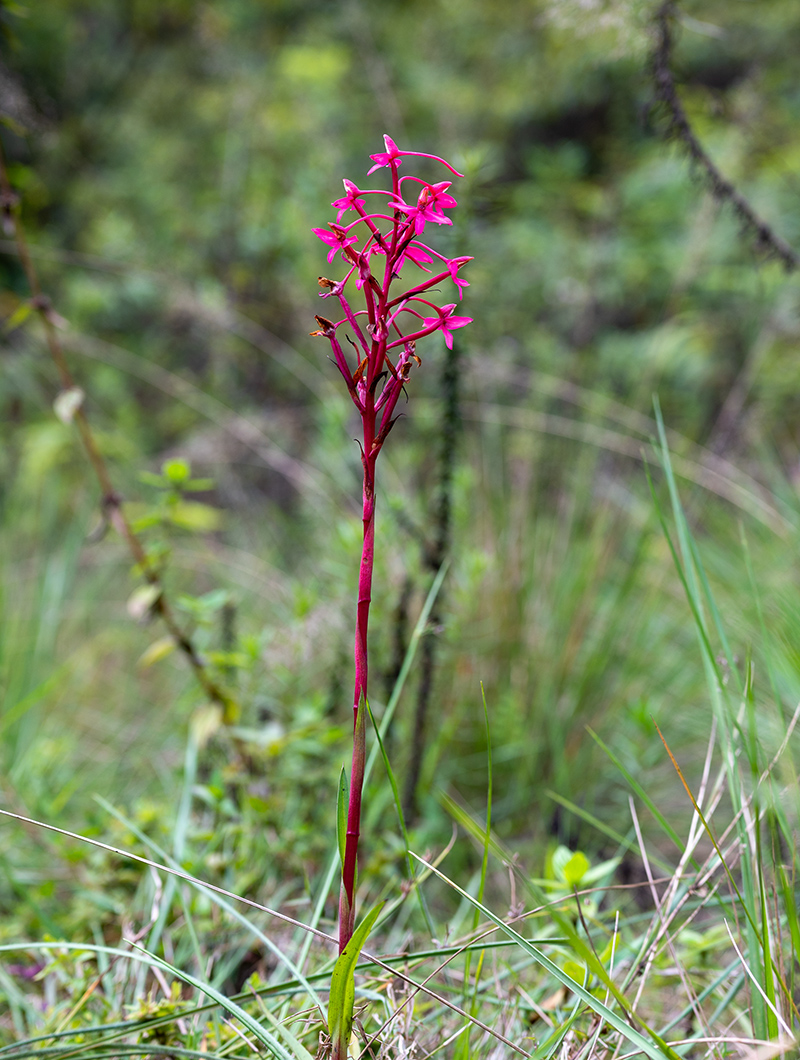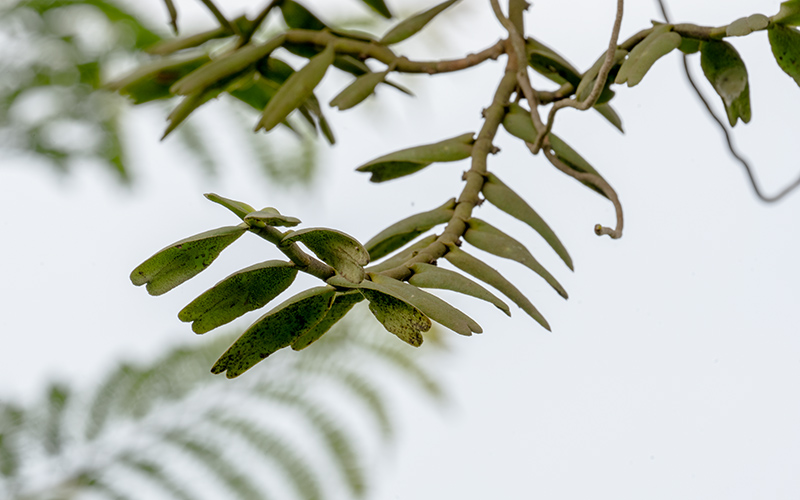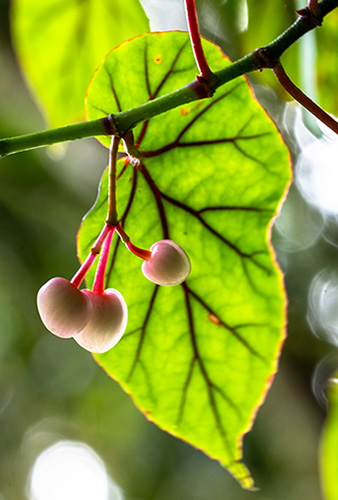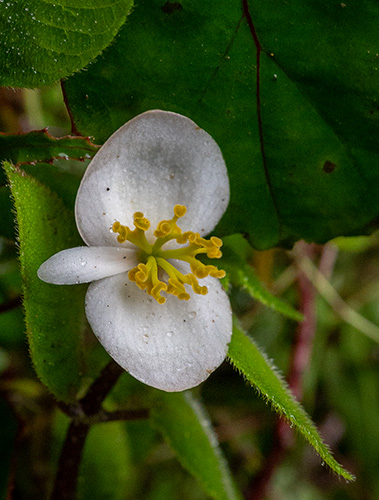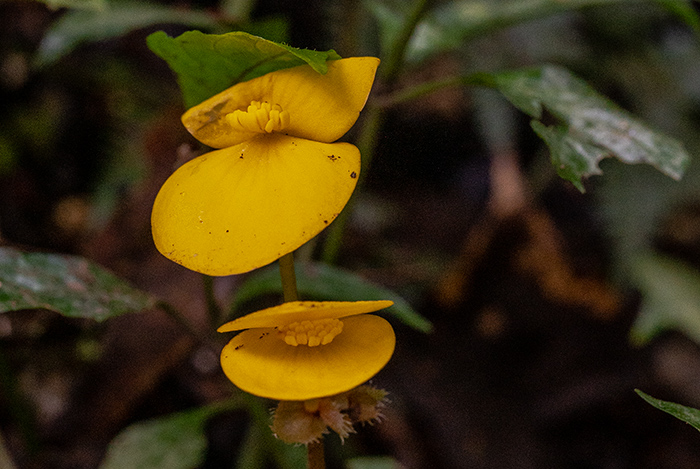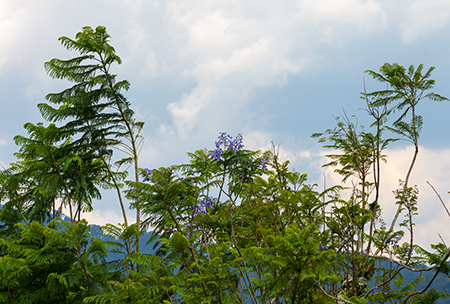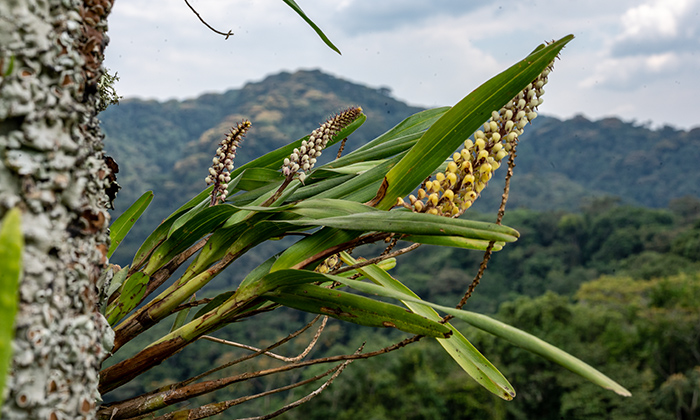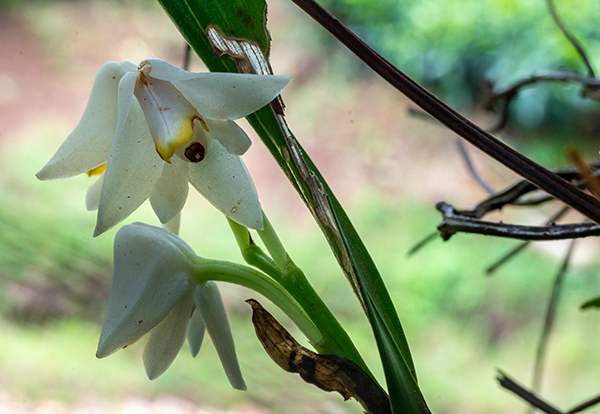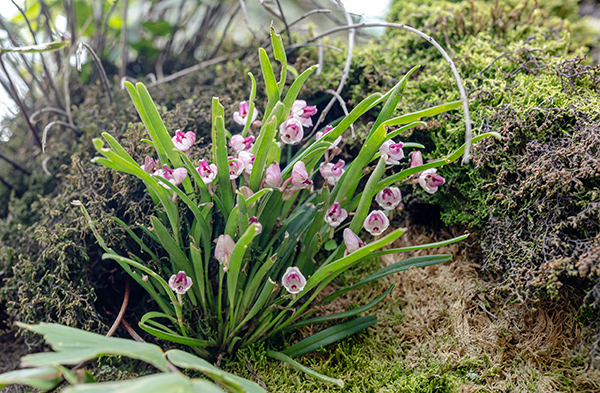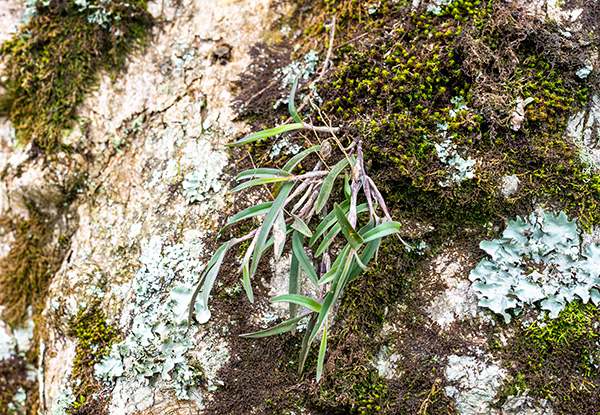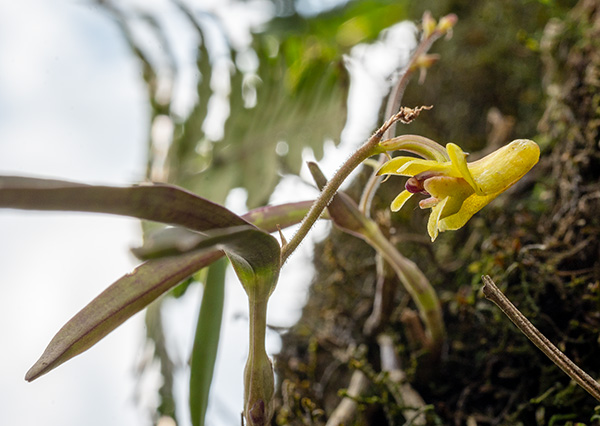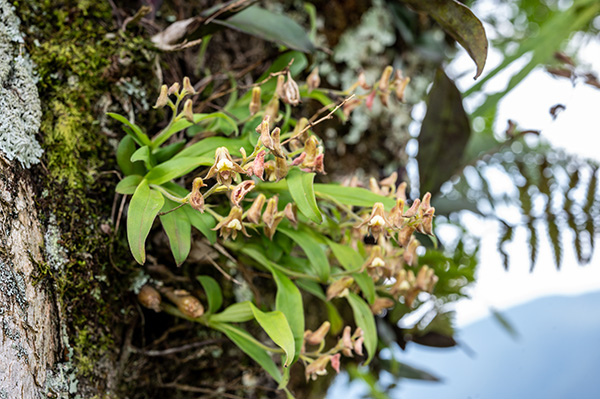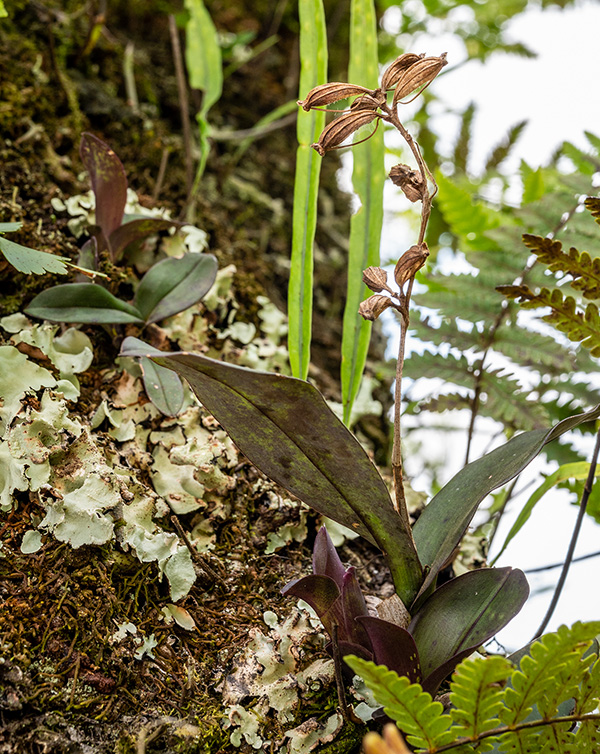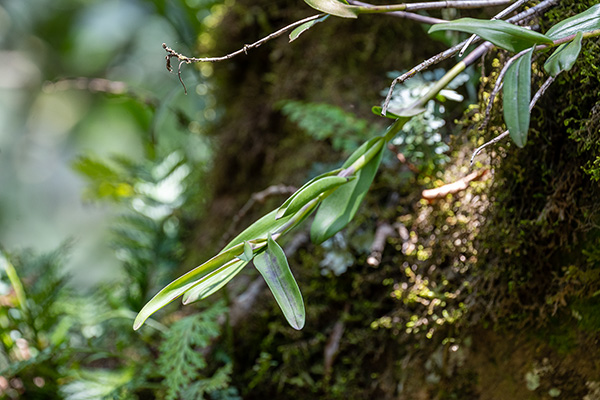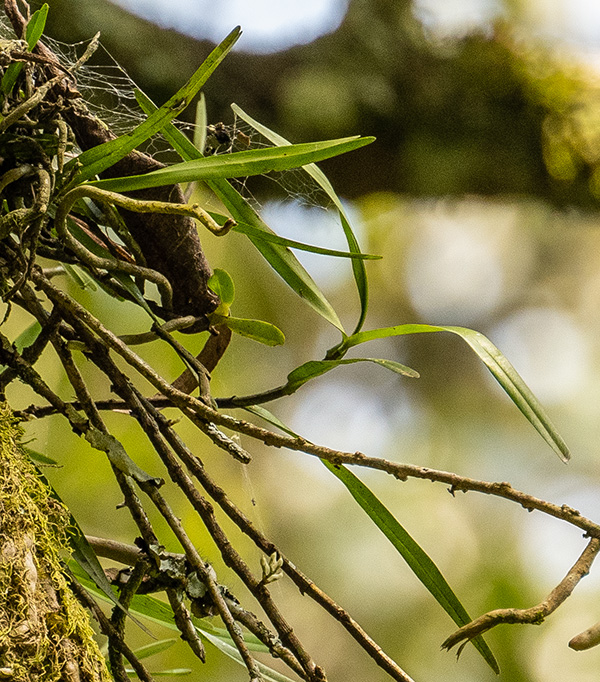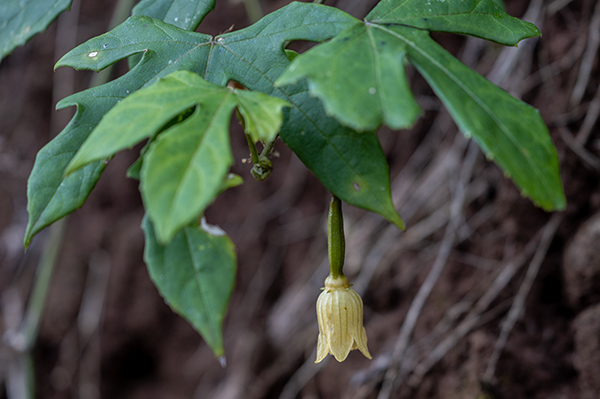The Nyungwe is a tropical mountain rainforest on the watershed between the Nile and the Congo. It is part of the African Rift Valley, the Albertine Rift, between Lake Albert, Lake Kivu and Lake Tanganjika. On an area of 970 square kilometers, 220 orchid species have been found in the Nyungwe so far, says Eberhard Fischer - in total, more than 1500 vascular plants have been identified there so far. But there are probably even more. Because up to now only about ten percent of the area is accessible with trails, around 90 percent of the Nyungwe forest is still unexplored.
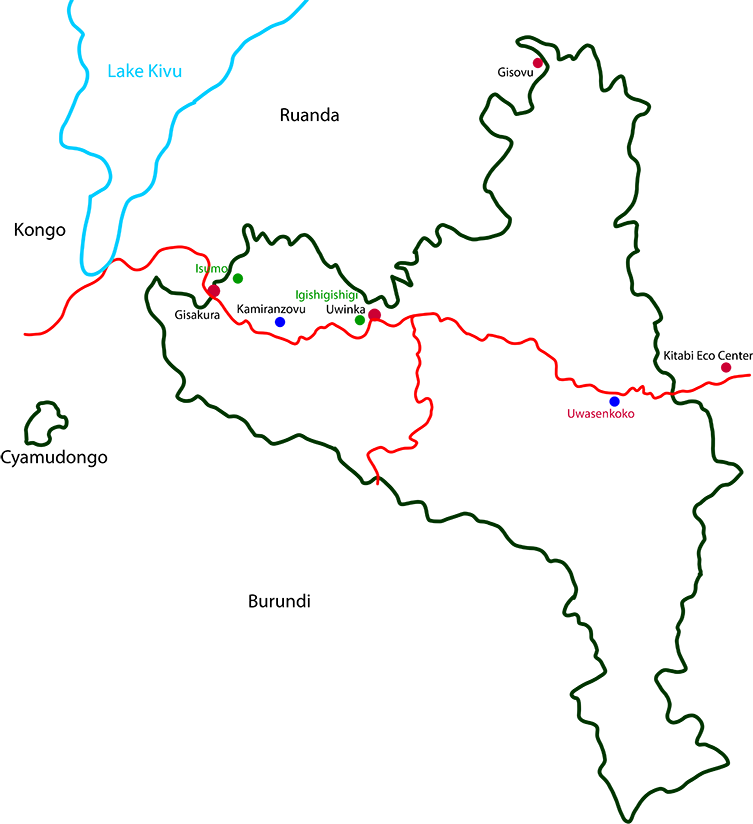
Uwinka
After the stopover in Butare, we row the eastern entrance to Nyungwe in the early afternoon of our second day in Rwanda, September 26, 2022. Dorothee exclaims enthusiastically: What a forest, what trees! From one kilometer to the next, the mountain slopes in the Land of 1000 Hills, as Rwanda is called, are suddenly no longer populated, there are no houses along the road. Instead, the evergreen rainforest stretches endlessly to the horizon. We make our first roadside stop at the Uwasenkoko Swamp, which is crossed by a small stream.
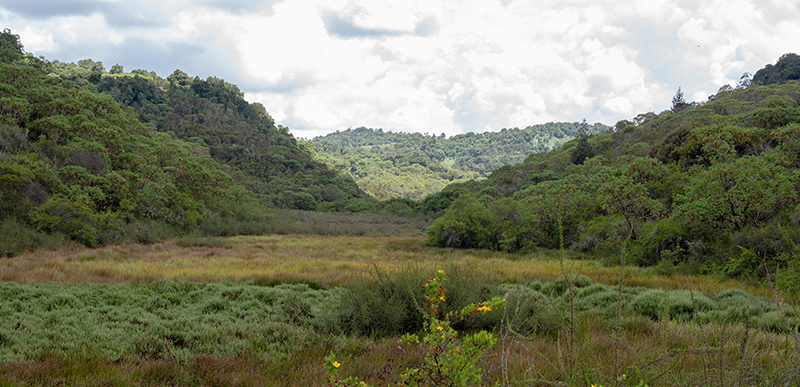
Dorothee draws my attention to a tree with a broad crown and pinnate leaves, the Koso tree (Hagenia abyssinica), characteristic of this area, called Umugeshi in Kinyarwanda.
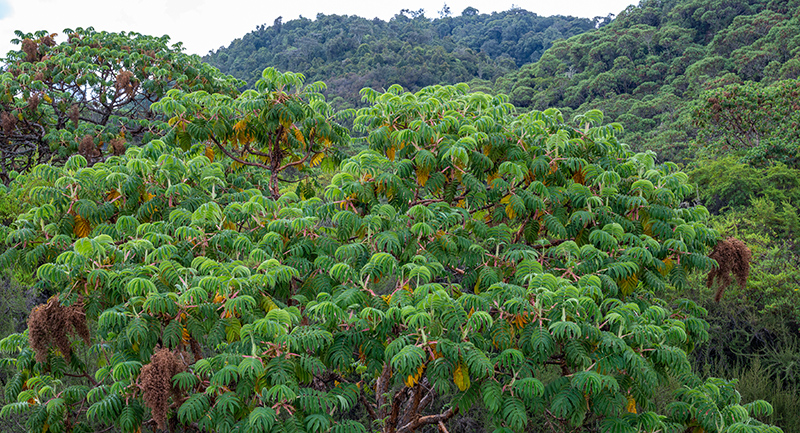
The first orchid I see here is an old acquaintance: I had already met Cynorkis anacamptoides three years ago on a trail at Kamiranzovu Swamp. The terrestrial, i.e. growing on the ground and not on trees, orchid with its only slightly opening flowers is the most common orchid species in Nyungwe. It is also widespread elsewhere in tropical Africa, from Nigeria to Zimbabwe.
After arriving at the Welcome Center in Uwinka, we first have to pass a Corona rapid test. But then we can start on the Igishigishigi Trail to the suspension bridge with the Canopy Walk. For our first botanical destination we don't have to walk long, then we see Wohlleben's mahogany, Carapa wohllebenii.
This is a special moment for Peter Wohlleben and his family, but also for Dorothee, Burkhard and Eberhard, who named the tree after him.
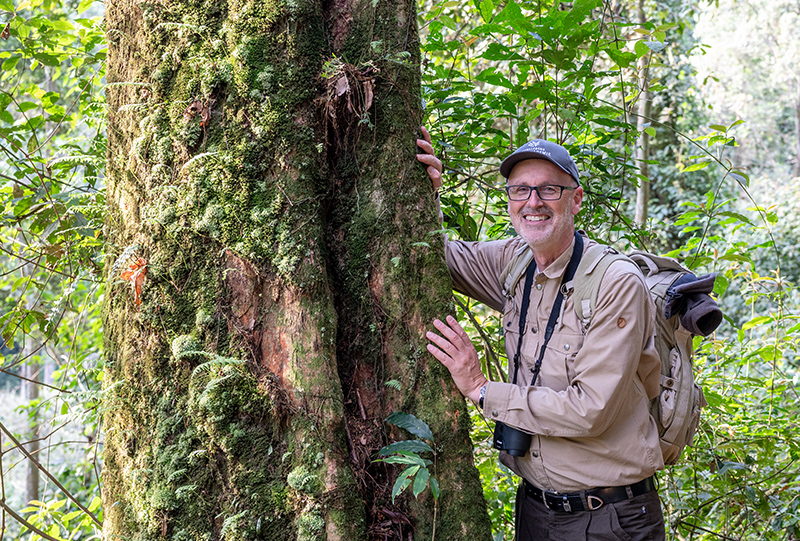
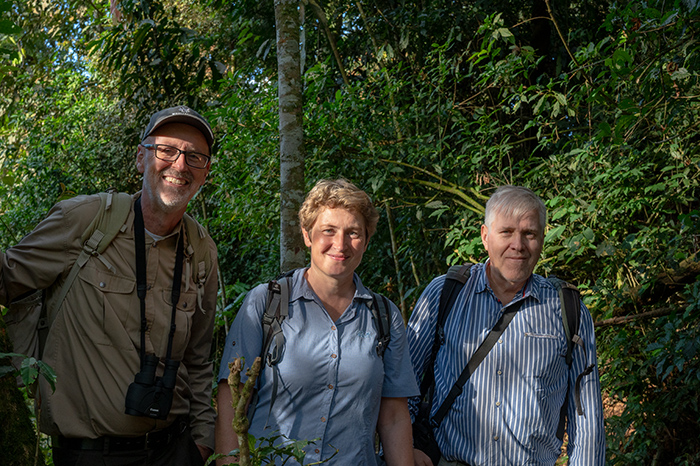
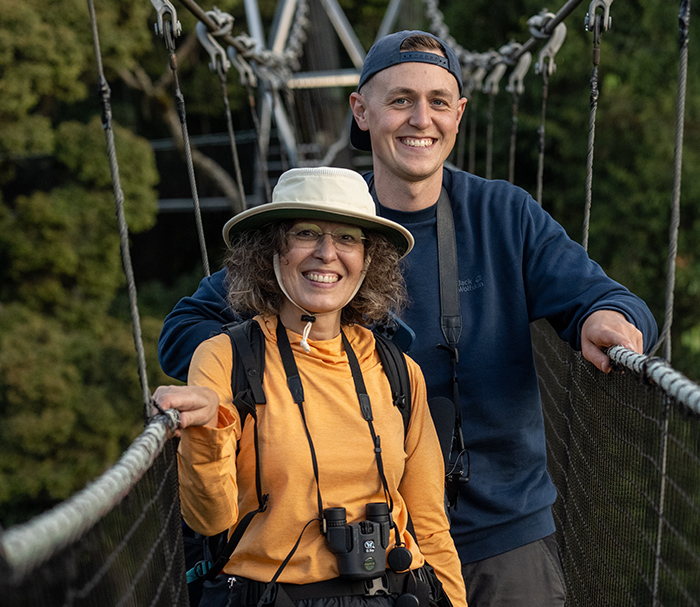
The giant trees are a world apart, each not only a species of tree but also a biotope for countless epiphytic plants. But there are also fascinating plants on the ground. At the wayside there is Cynorkis anacamptoides again. Then I am especially captivated by the snapweeds. An important element of the African flora, which is also well represented in the Albertine Rift, is the species-rich herb genus Impatiens," write Eberhard Fischer, Stefan Abrahamczyk, Norbert Holstein, and Steven B. Janssens in a paper published in September 2021 on the evolution of Impatiens in the Great African Rift Valley in the journal Taxon. Of the approximately 1200 species of the genus worldwide, just over 130 are native to Africa. On the serpentine path leading downward, we first encounter Impatiens burtonii, which is widespread from Cameroon to Ethiopia.
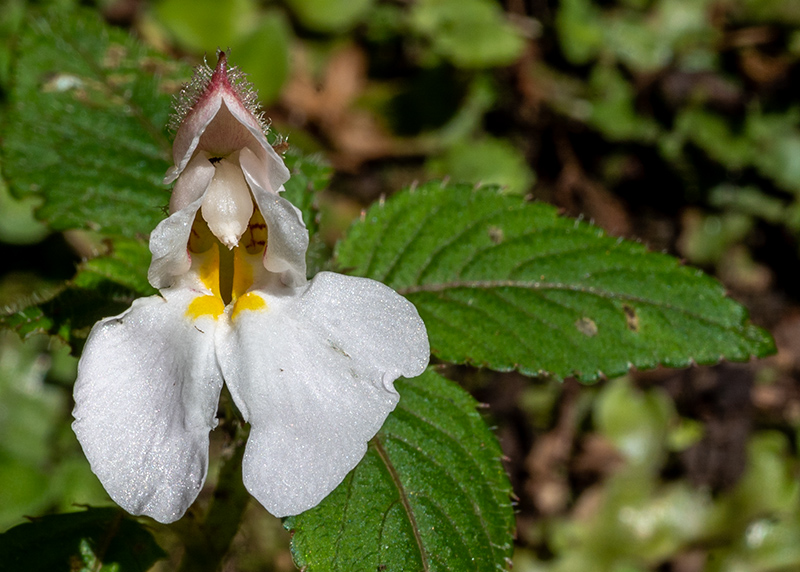
An endemic species in the Albertine Rift is Impatiens purpuro-violacea, which was discovered in 1907 on an expedition by Johannes Mildbraed (1879-1954). In the account of the botanical results he stated: A very distinguished species by its peculiar pubescence and completely inrolled spur. Yes - this is very visible.
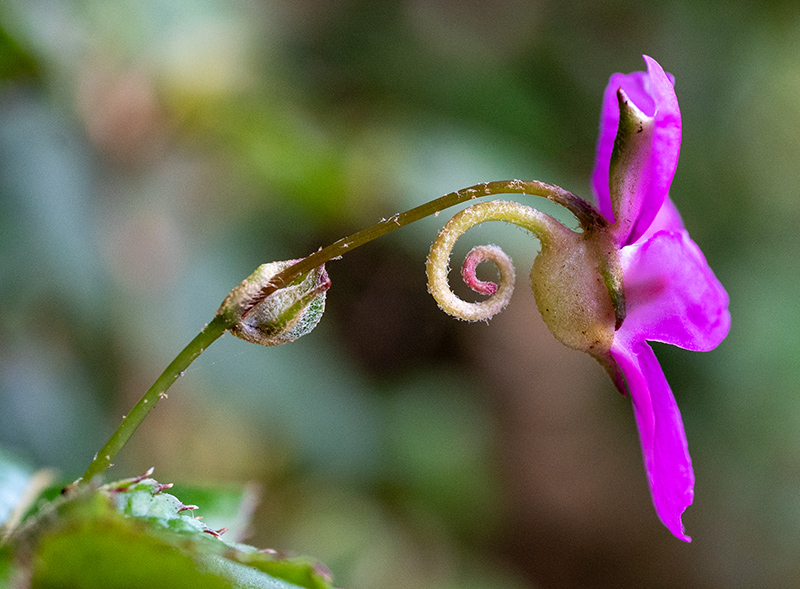
The third species in this day's Impatiens roundup is Impatiens niamniamensis, which is not pollinated by insects but by nectar birds. The plant, which is widespread from Cameroon to Kenya, recalls in its name the ethnic group of the Niam-Niam or Azandeh in the Congo, whose members were said to be cannibalistic. Eberhard explains that there could be a new taxonomic decision on this plant, however.
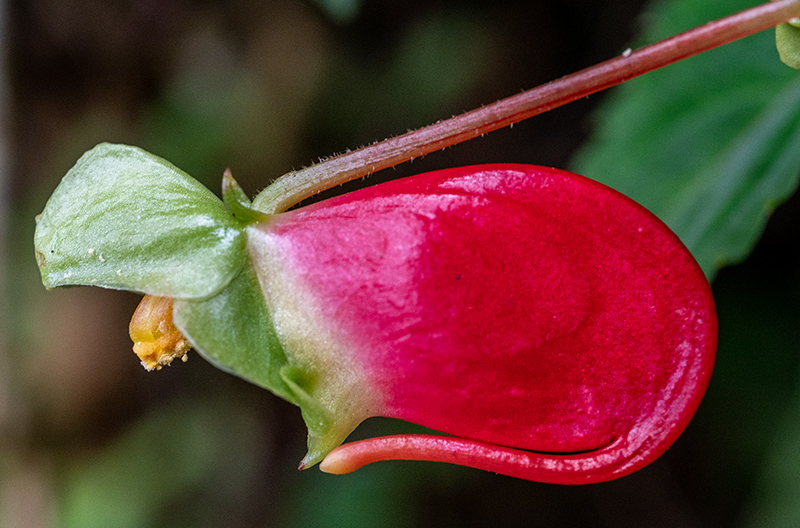
What is blooming so small and deep blue on the ground? That's the smallest of all Lobelia, Dorothee answers. Its tiny size is also expressed in its scientific name: Lobelia minutula.
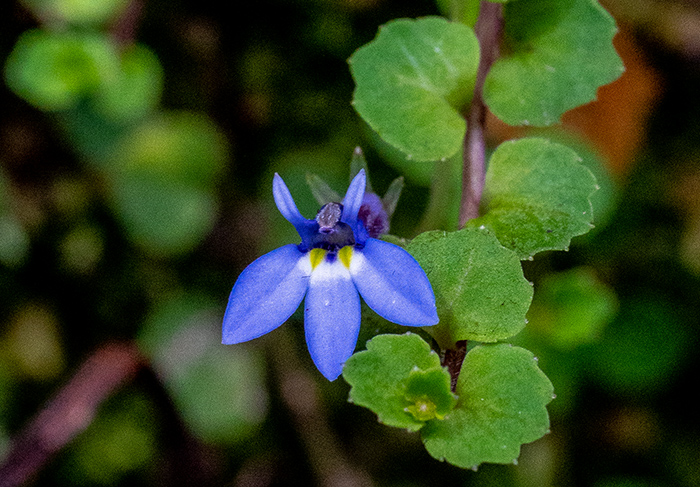
Again and again I look up into the trees in search of orchids. September is not the best time to bloom, says Eberhard, who notices my glance. But then I discover a special orchid on the suspension bridge: Numerous mustard-yellow flowers of Polystachya spatella stretch out on hanging narrow leaves towards the now slowly fading light.
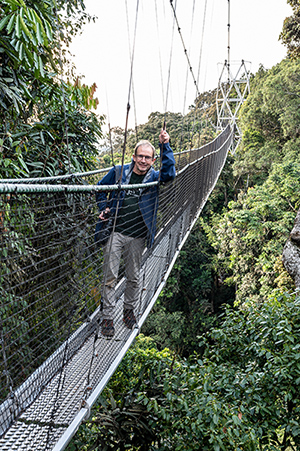 Up to now, the Nikon Z 6 with the macro lens 50/2.8 was mainly used, but now I am grateful that the Z 7 II with the 100-400mm telephoto lens closes the distance to the orchid on the tree for me. Because the bridge is constantly swaying, I choose a fast shutter speed of 1/550 second, and for light sensitivity I have to go up to ISO 2000. The aperture is limited to 5.6, but still lets through enough light.
Up to now, the Nikon Z 6 with the macro lens 50/2.8 was mainly used, but now I am grateful that the Z 7 II with the 100-400mm telephoto lens closes the distance to the orchid on the tree for me. Because the bridge is constantly swaying, I choose a fast shutter speed of 1/550 second, and for light sensitivity I have to go up to ISO 2000. The aperture is limited to 5.6, but still lets through enough light.
An orchid from another genus thrives on a thick branch. It sprouts buds, but must remain undetermined for the time being.
Night falls quickly, we have to go back to the Welcome Center Uwinka. On the way back a thunderstorm breaks over us. The call of the turaco sounds almost mystical.
The last view of the day over the Nyungwe heights to Lake Kivu remains unforgettable.
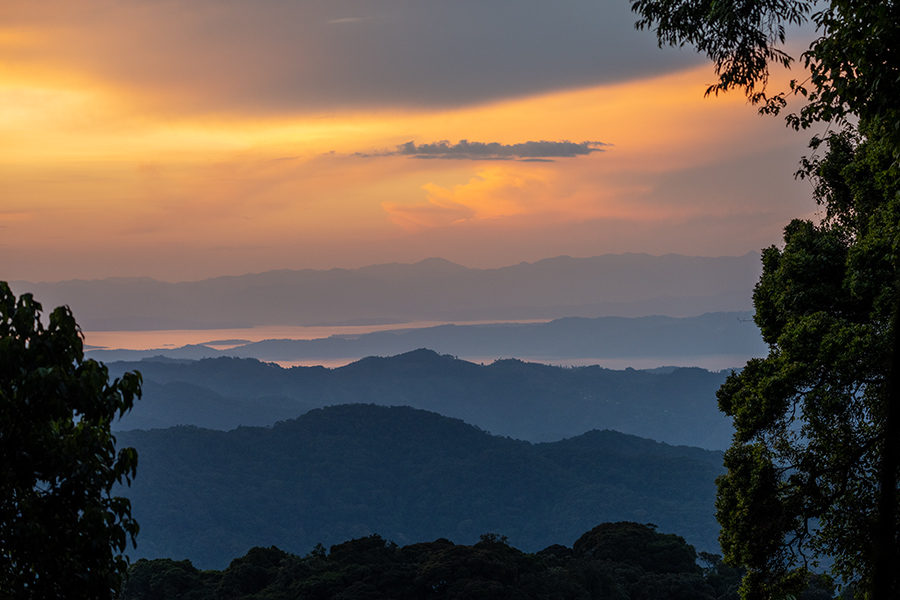
on the Disa slope
Then on October 6 we are on the road again between Uwinka and Kamiranzovu Swamp to see the terrestrial orchid Disa eminii. Its bright pink-red color can be seen from far away.
Also growing on the ground is Satyrium crassicaule, which I had seen blooming three years ago. Here it is still budding.
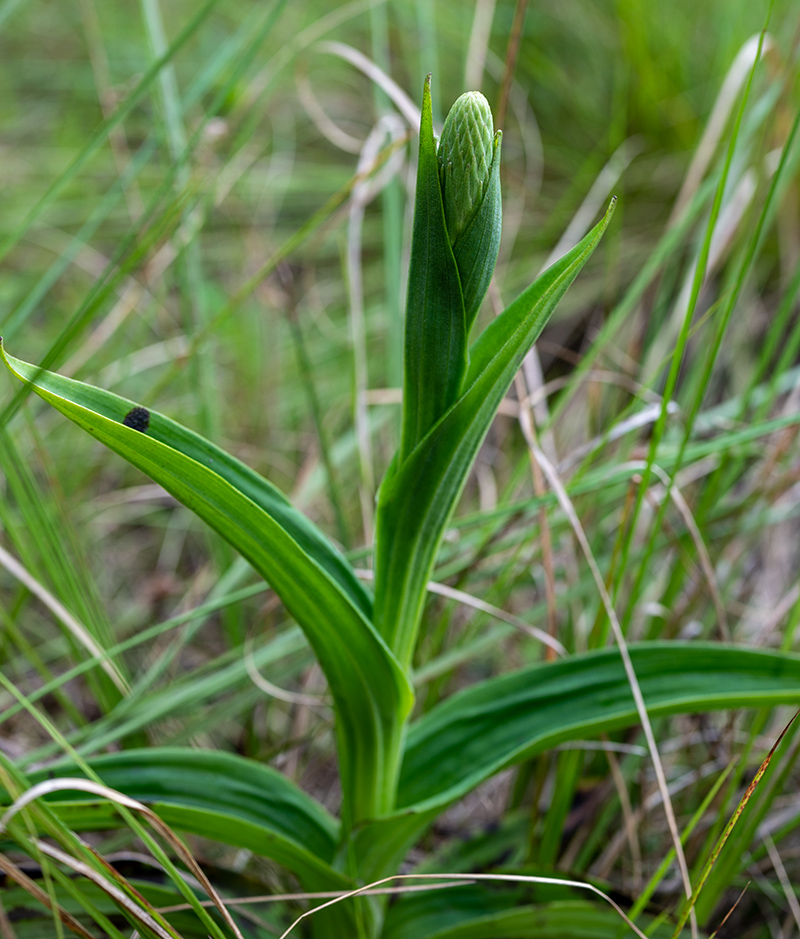
The orchid view always goes upward in the Nyungwe. And so I see on one of the jungle giants also a plant sprouting in all directions with leaves that are conspicuously notched at the tips. This is the greenish flowering Rhipidoglossum rutilum with a distribution area from West Africa to Mozambique. If you look closer, you can also see buds.
On the drive to Lake Kivu the day is coming to an end and we get to see one more special primate, L'Hoest's monkey (Allochrocebus lhoesti).
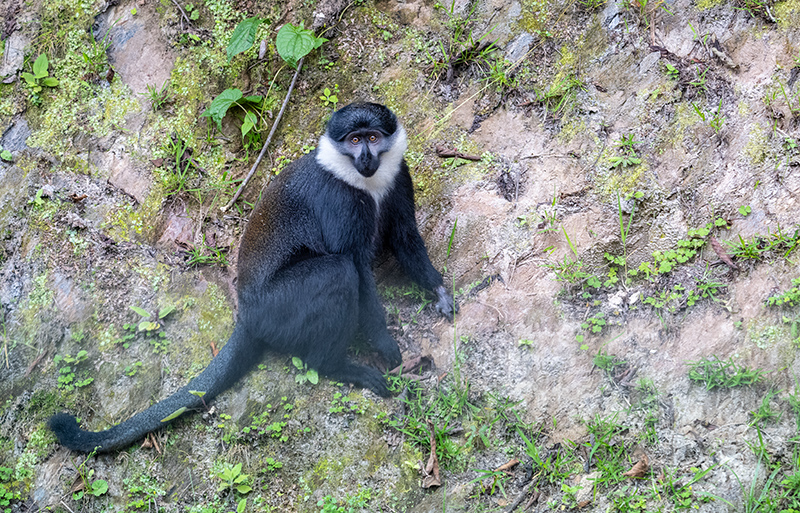
A Red Duiker also jumps up at the roadside. As a ruminant, the small antelope feeds on leaves, flowers and fruits. The scientific name Cephalophus natalensis indicates its orignis are in the South African province of KwaZulu-Natal.
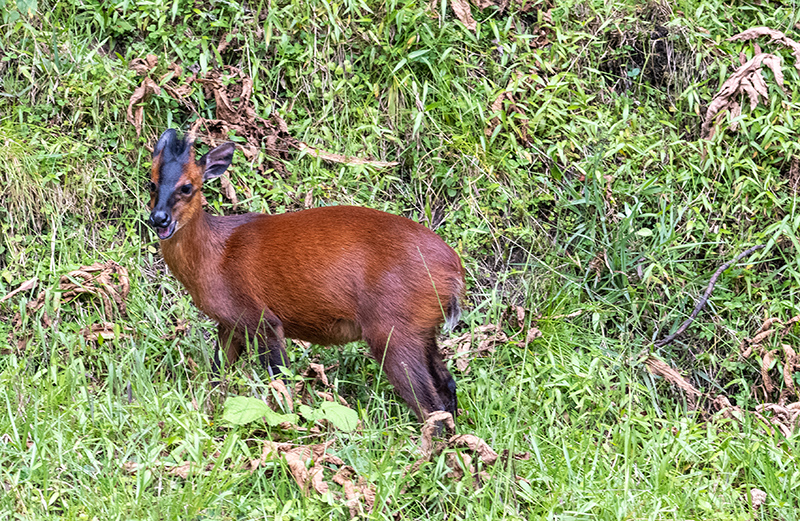
Gisakura
After breakfast at Dushumyumikiza, we drive to Gisakura, the western welcome center of Nyungwe National Park. From there we drive a few kilometers into the tea plantations, to the edge of the rainforest. A farm worker looks at us curiously, then allows me to take her picture.
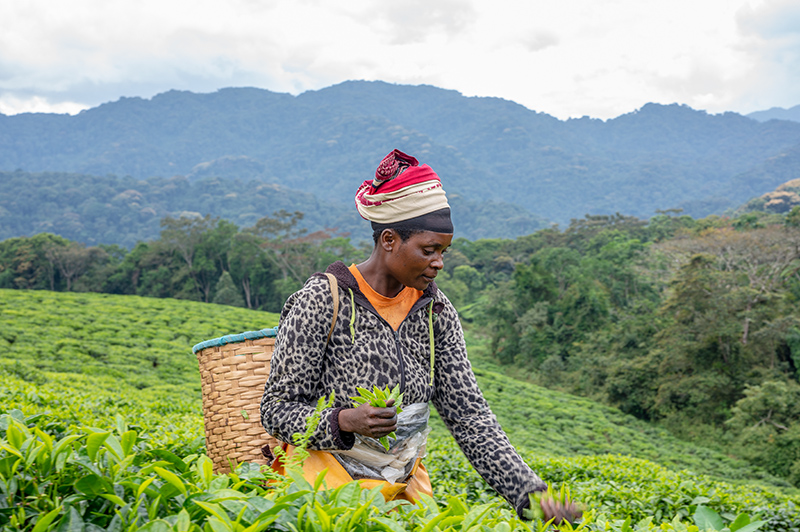
Eberhard directs our gaze to a special sage, Brillantaisia nitens, at the edge of the forest. He demonstrates the special pollination mechanism of the flowers: when a bee settles on the lip, the flower narrows and the pollinator is pressed against the pollen.
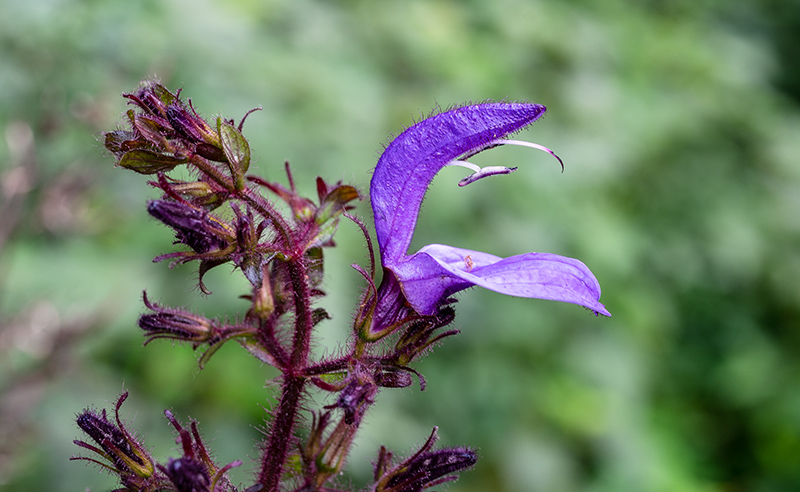
As soon as we enter the rainforest from the tea plantation, high humidity surrounds us - the western edge of Nyungwe is clearly more humid than the east. Dorothee draws our attention to a special skin fern that has laid itself like a carpet on a tree trunk. It belongs to the genus Hymenophyllum, which is also present in the family name of the skin ferns: Hymenophyllaceae.
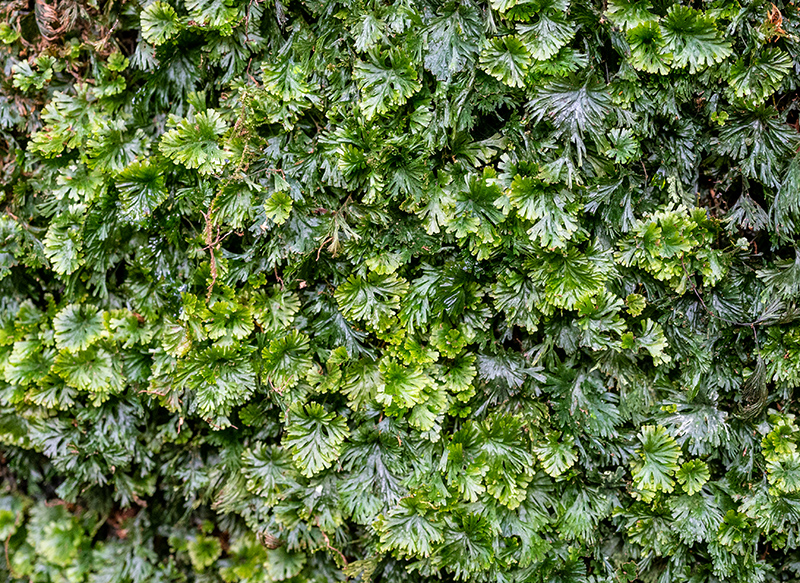
The trail to the waterfalls of Isumo, the Waterfall Trail, invites us to continue our Impatiens studies. First there is Impatiens bequaertii, an endemic of the Albertine Rift, at home between Uganda and Burundi. The plant owes its popular name "dancing girl" to its characteristic flower shape.
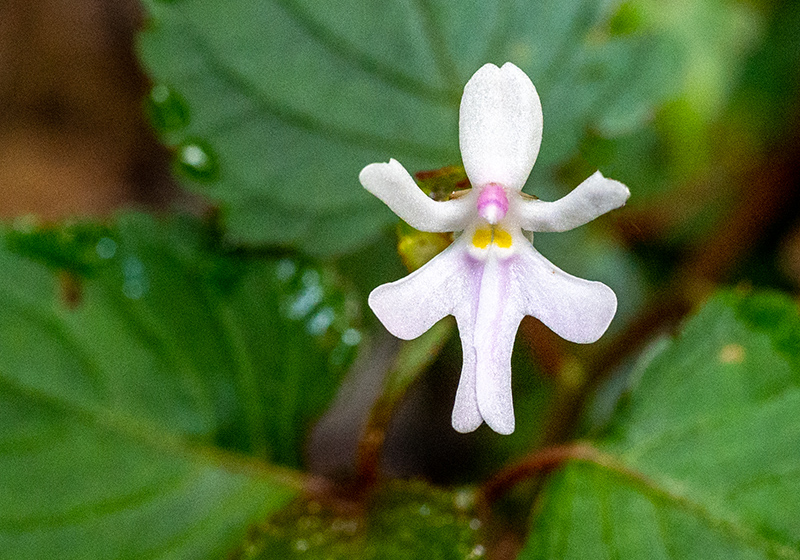
And then there is Impatiens ludewigii, related to Impatiens purpuroviolacea, only described in 2021 by Eberhard Fischer et al. and named after the Chancellor of the University of Koblenz, Michael Ludewig.
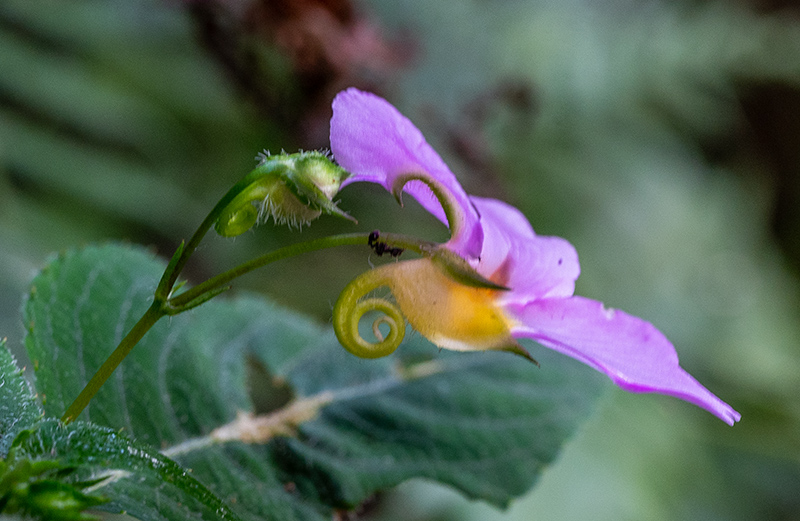
The deeper the path leads us to the valley floor, the more often we encounter Impatiens stuhlmannii with bright flowers.
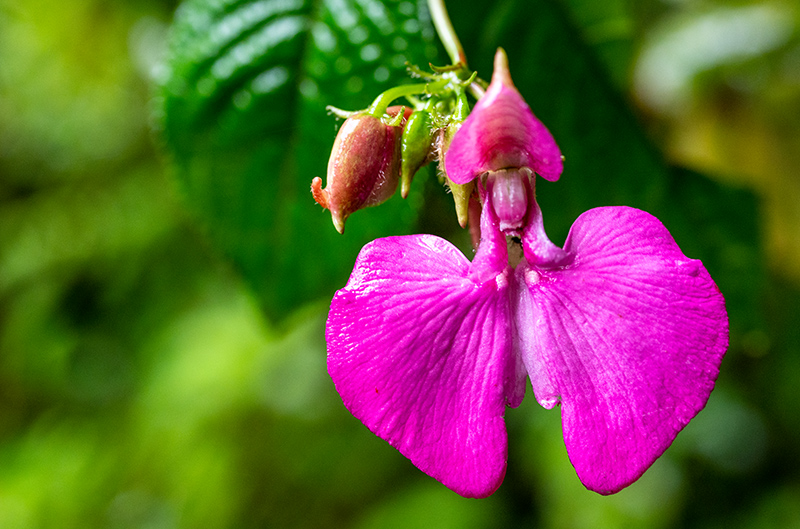
Other rainforest beauties are Begonia - with 1800 to 2000 species in Africa, Asia and America, depending on the delimitation, this is a very species-rich genus. Begonia meyeri-johannis has quite a wide distribution from the Congo to Kenya, Tanzania and Malawi. It is the only climbing begonia species in Rwanda. Male flowers have four petals, female have two to four petals.
Begonia pulcherrima carries the beauty already in its name. The yellow flowering plant is an endemic from the Nyungwe and the adjacent rainforest in Burundi.
As with many Begonia, there are male flowers (above) with about 20 stamens and female flowers with three or four styles. The species was described in 1992 by Dutch botanist Marc Simon Maria Sosef, who has studied the genus, which consists of 900 to 1400 species, in detail. He noted that most begonia species are at home in the more or less shady undergrowth of tropical rainforests and have adapted to these particular conditions.
At the bottom of the valley we finally reach the Isumo waterfall. In the humid air there is lush vegetation with ferns and numerous Impatiens stuhlmannii.
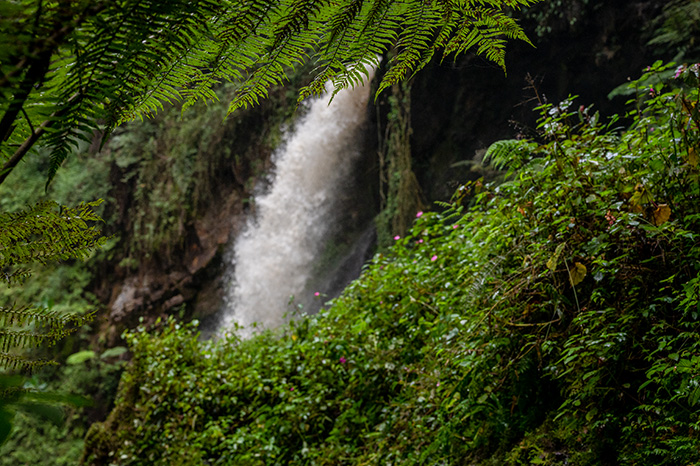
During the ascent, a thunderstorm surprises us with abundant rain and a magical sound backdrop.
In the growing twilight, the view goes upwards, to branches with countless ferns and orchids, whose outlines stand out from the sky like silhouettes.
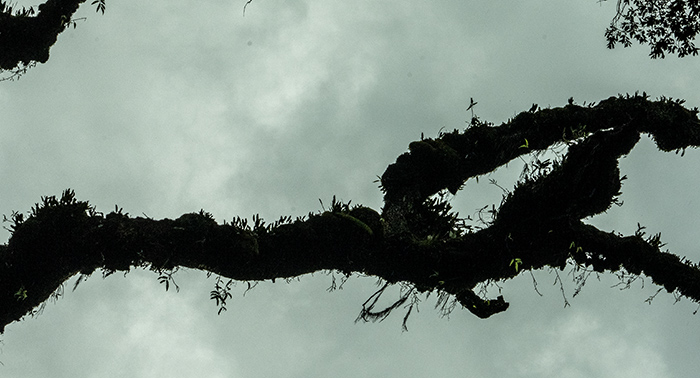
in the Jacaranda tree
On October 6, we are once again on the western Nyungwe rim near Gisakura. We drive on small dirt roads and pass a lively colony of monkeys.
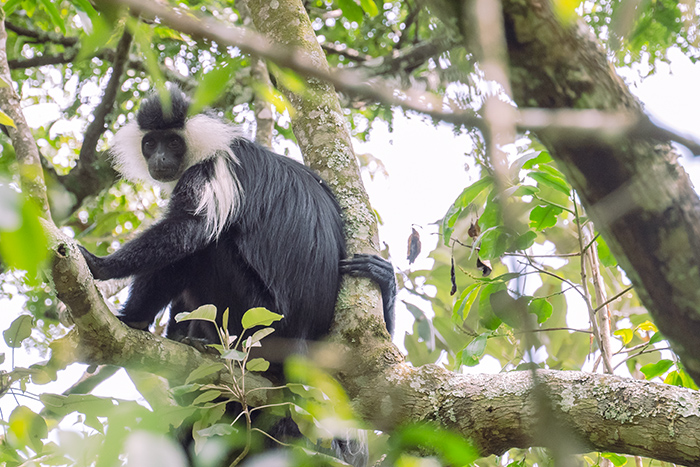
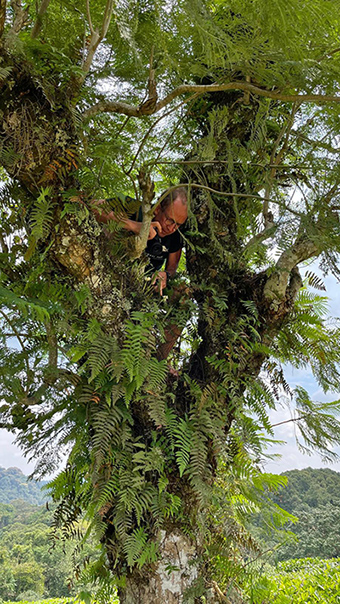 At the edge of a tea plantation we reach a row of old Jacaranda trees overgrown with ferns and orchids. I follow the example of the monkeys and climb up to have a close look at the plants. In a short time we note eleven different species, many also flowering. Among them are seven species of the genus Polystachya alone.
At the edge of a tea plantation we reach a row of old Jacaranda trees overgrown with ferns and orchids. I follow the example of the monkeys and climb up to have a close look at the plants. In a short time we note eleven different species, many also flowering. Among them are seven species of the genus Polystachya alone.
Polystachya andansoniae is in full flower. The large inflorescence is densely covered with numerous individual flowers, whitish-yellow, with reddish-brown, downward lip tips.
In contrast, Polystachya fallax, an endemic orchid of the region between Burundi, Rwanda, eastern Congo and western Uganda, has large single flowers. It blooms white to yellowish, with a dark red gymnostemium.
Polystachya aconitiflora has very small flowers, light pink to red. It too is endemic to the region and otherwise found only in eastern Congo and western Uganda.
With significantly larger flowers than Polystachya aconitiflora and also otherwise clearly distinguishable is Polystachya vulcanica, another endemic of the region. The cream-colored flowers have pink accents on the lip and at the tip of the gymnostemium.
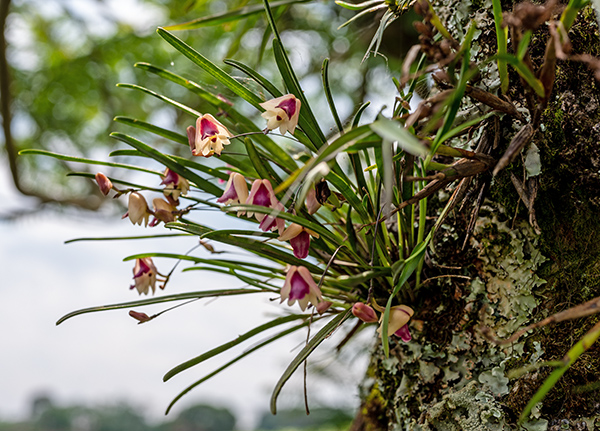
Vertically on the tree trunk, Tridactyle species such as Tridactyle eggelingii also grow among mosses and lichens.
Polystachya spatella is also among the rich Polystachya flora of the Jacaranda trees, which I can now look at more closely than before at Uwinka.
Polystachya tridentata, another endemic of the Albertine Rift, has particularly large flowers that are finely hairy.
No longer flowering is Polystachya mauritiana, which is more widespread in tropical Africa, from Guinea to Ethiopia and Zimbabwe. It has greenish-white very small flowers. Here we can look at the fruits.
Gisovu
On October 5, we drive over dusty dirt roads from Peace Guest House in Cyangugu to the northern edge of Nyungwe. Children play barefoot on the road, a mother breastfeeds her baby in front of the mud house. Near the village of Gisovu is a station of the Rwanda Development Board (RDB). There, Eberhard and Dorothee talk with the management of the national park about joint conservation and research projects. In the meantime I walk a path into the rainforest. Near here is the Nile spring discovered by Richard Kandt. On my way, villagers are on their way to the market on heavily loaded bicycles. At first I pass tall Eucalyptus trees. But then I dive into the rainforest flora, with epiphytic ferns like Pleopeltis macrocarpa growing on almost every tree. Rather rare is the fine Asplenium theciferum.
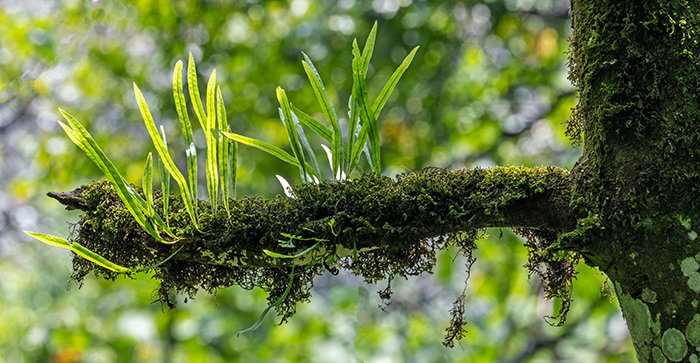
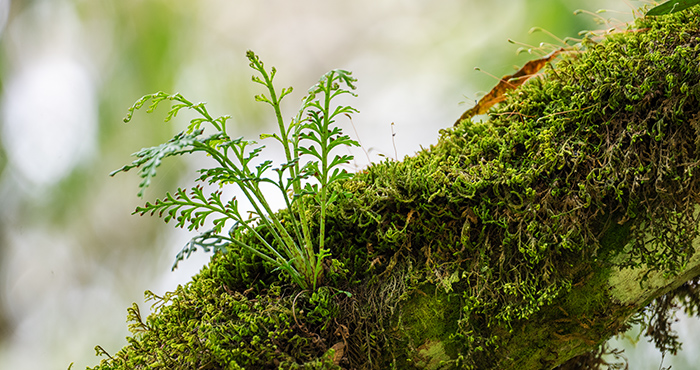
Orchids also feel at home here like this Polystachya, which has not yet formed flowers:
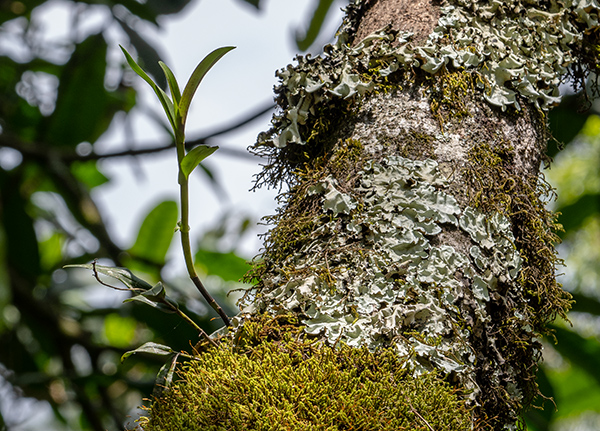
Recognizable by its leaves is Rhipidoglossum bilobatum. Also native to Burundi, eastern Congo, Uganda and Kenya, this orchid has stout, fleshy leaves on a long stem. Its flowers can be seen from January and are greenish-white.
In another tree I discover Tridactyle virgula, which I already know from the garden in Butare and experienced in most beautiful bloom. Here only buds are formed.
Finally I have to turn back to be meet the group at the agreed time. On a meager meadow I still see Cynorkis anacamptoides, certainly the most common terrestrial orchid in Nyungwe. Much larger than the European Polygala species, familiar companions on many orchid explorations, is Polygala ruwenzoriensis.
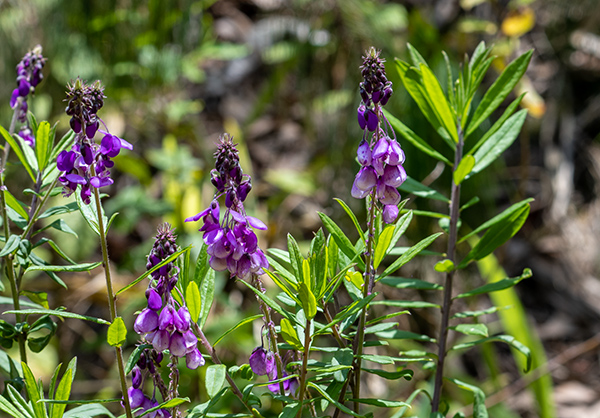
Finally, Eberhard draws my attention to Coccinia mildbraedii, which belongs to the cucurbits. Cylindrical fruits, which are first bright, and finally bright red, develop on the inflorescence of the pretty, bell-like flower. The species is named after the botanist Johannes Mildbraed (1879-1954), who in 1907 took part in the expedition led by Adolf Friedrich zu Mecklenburg, which also led to the Nyungwe.
